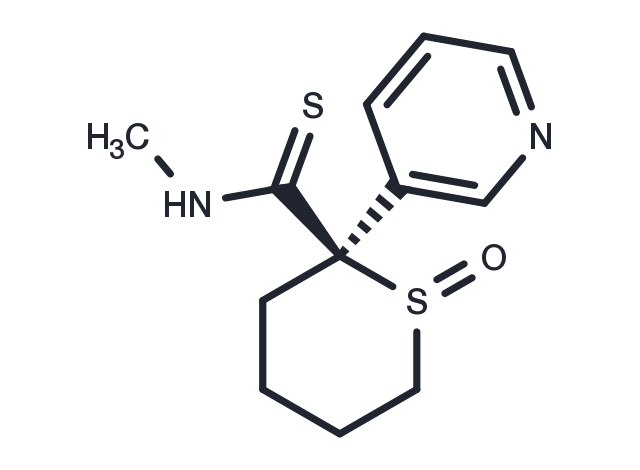Powder: -20°C for 3 years | In solvent: -80°C for 1 year


Aprikalim is a specific and selective ATP-sensitive K+ (KATP) channel opener. Aprikalim affords cardioprotection and at higher doses also cause peripheral or coronary vasodilatation.

| Pack Size | Availability | Price/USD | Quantity |
|---|---|---|---|
| 25 mg | 6-8 weeks | $ 1,520.00 | |
| 50 mg | 6-8 weeks | $ 1,980.00 | |
| 100 mg | 6-8 weeks | $ 2,500.00 |
| Description | Aprikalim is a specific and selective ATP-sensitive K+ (KATP) channel opener. Aprikalim affords cardioprotection and at higher doses also cause peripheral or coronary vasodilatation. |
| Synonyms | RP52891, RP-52891, RP 52891 |
| Molecular Weight | 268.4 |
| Formula | C12H16N2OS2 |
| CAS No. | 132562-26-6 |
Powder: -20°C for 3 years | In solvent: -80°C for 1 year
You can also refer to dose conversion for different animals. More
bottom
Please see Inhibitor Handling Instructions for more frequently ask questions. Topics include: how to prepare stock solutions, how to store products, and cautions on cell-based assays & animal experiments, etc.
Aprikalim 132562-26-6 RP52891 RP-52891 RP 52891 inhibitor inhibit
